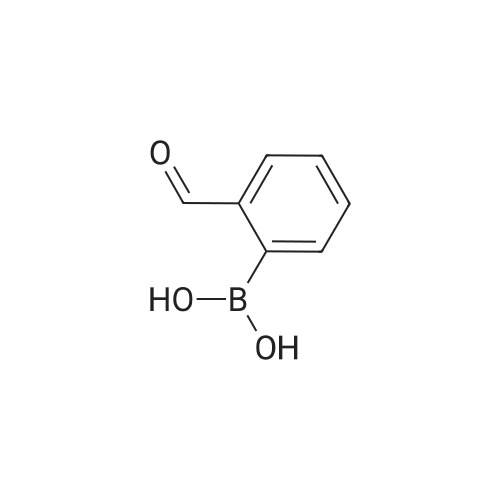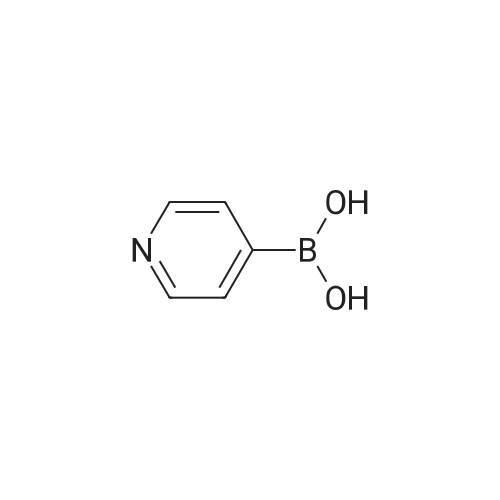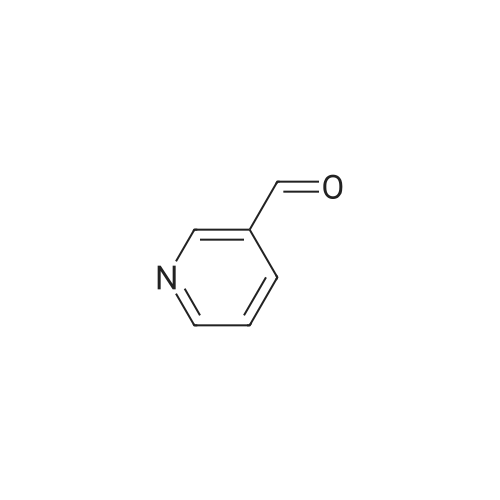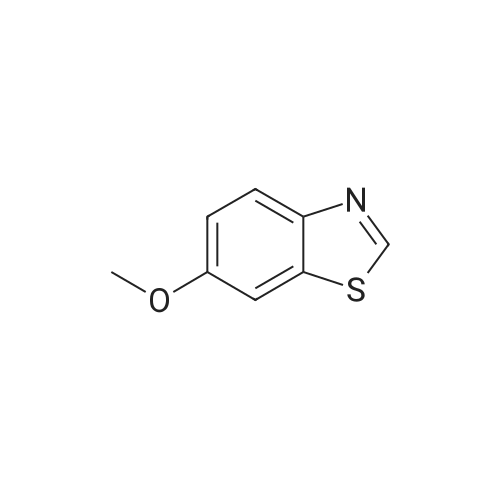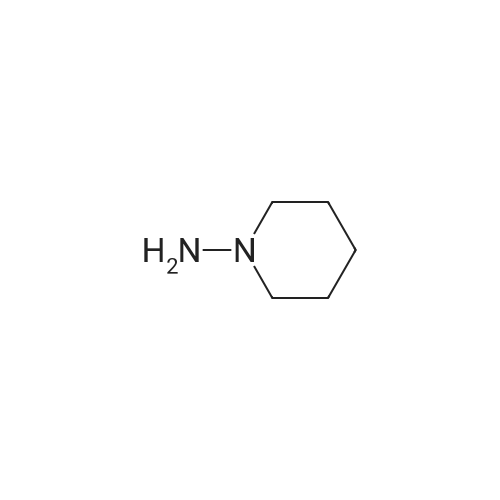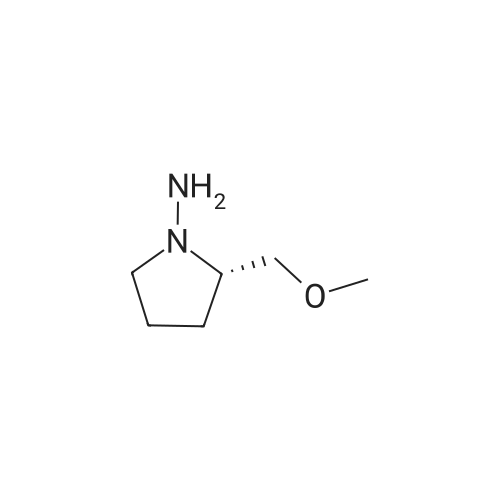| 95% |
With 1,3-disulfonic acid imidazolium hydrogen sulfate; In neat (no solvent); at 20℃; for 0.2h;Green chemistry; |
General procedure: Amine (1 mmol) was added to the mixture of (Boc)2O (1 mmol) and DSIMHS (6.5 mg, ~ 0.02 mmol) with constant stirring at room temperature under solvent-free conditions. After completion of the reaction (monitored by TLC), ethyl acetate (3 × 5 mL) was added to the reaction mixture and the catalyst was decanted and washed with ethyl acetate (2 × 5 mL) and dried. The product was purified by column chromatography, using ethyl acetate-petroleum ether (2:8) eluent. |
| 95% |
With phenylsulfonic acid supported on mesoporous silica SBA-15; In neat (no solvent); at 20℃; for 0.25h;Green chemistry; |
General procedure: An amine (1 mmol) was added to a magnetically stirred mixture of SBA-15-Ph-SO3H (1 mol %, 4 mg) and (Boc)2O (1.1 mmol) at room temperature. The progressof the reaction was monitored by thin-layer chromatography (TLC). After completion of the reaction, the reaction mixture was diluted with EtOH (5 mL)and centrifuged. Then the clear liquid was separated, and the residue containing the catalyst was kept for recovery. EtOH was distilled off under vacuum to yield the highly pure N-Boc derivative. |
| 94% |
With pyridinium trifluroacetate; In neat (no solvent); at 20℃; for 0.833333h;Green chemistry; |
General procedure: To a magnetically stirred mixture of amine (1mmol) and (Boc)2O (1mmol) a catalytic amount of ionic liquid (0.2mmol) was added under solvent-free conditions at room temperature for the specified period of time. The progress of the reaction was monitored by TLC and GC-MS. The mixture extraction was carried out using ethyl acetate (2×5mL). The organic layer was washed with water (2×10mL) and dried over anhydrous Na2SO4. The solvent was evaporated under vacuum to yield highly pure N-Boc derivatives. In some cases, the purification was done by column chromatography using silica gel (60-120) by hexane-ethyl acetate as eluent to get a pure product. |
| 93% |
With guanidine hydrochloride; In ethanol; at 35 - 40℃; for 1h; |
General procedure: Amine (1 mmol) was added to a magnetically stirred solution of guanidine hydrochloride (15 mol%) and di-tert-butyl dicarbonate (1.2 mmol) in EtOH (1 mL), at 35-40C and stirred for appropriate time (Table 1). After completion of the reaction (followed by TLC or GC), EtOH was evaporated under vacuum and the residue either was washed with water to remove the catalyst or was dissolved in CH2Cl2 (or EtOAc) and filtered off to separate out the catalyst. Evaporation of the organic solvent (if used in work up) gives almost a pure product. In the cases of using an excess (Boc)2O the product was washed with petroleum ether or hexane to recover the residual (Boc)2O. If necessary, the product was further purified either by crystallization (hexane and dichloromethane, or diethyl ether and petroleum ether) or silica gel column chromatography using EtOAc-hexane (1: 6) as eluent. |
| 92% |
With choline chloride; urea; at 50℃;Green chemistry; |
General procedure: A dried test tube, equipped with a magnetic stir bar, wascharged with 0.5 cm3 DES, amine derivatives(0.5 mmol), and Boc2O (0.5 mmol) and the mixture washeated at 50 C until the reaction was complete (monitoredby TLC and IR). After this time, 5 cm3 water wasadded and in the most cases a white solid was obtained.The solid product was collected by filtration and washedsuccessively with water and recrystallized from ethanolto get the pure final product [51-60]. The viscousproducts extracted with ethyl acetate and were purifiedby column chromatography, using ethyl acetate-petroleumether. |
| 90% |
With dmap; triethylamine; In dichloromethane; at 0 - 20℃; |
To a mixture of 4-bromoaniline (950 mg, 5.6 mmol), triethylamine (678 mg, 6.7 mmol) and DMAP (73 mg, 0.56 mmol) in DCM (30 mL) was added Boc20 (1.22g, 5.6 mmol) at 0 C. The reaction mixture was allowed to warm to room temperature and stirred for 2 hr. After the reaction was quenched with 5% NaHC03, the mixture was extracted with DCM (3 x 20 mL). The organic layer was combined and dried over anhydrous MgS04. tert-Butyl 4-bromophenylcarbamate (1.36 g, 90%) was obtained after flash column chromatography (hexane:ethyl acetate, 4: 1). |
| 90% |
|
For the N-boc protection of amines, to solution of diboc (1 mmol) in ethanol (5 ml) was added {K*18-crown-6]Br3}n (0.001 mmol). The solution was stirred at room temperature for 1 min. The amine (1 mmol) was then added and solution as stirred at room temperature for an appropriate time (table 1). After completion of the reaction, the solvent was removed by water bath distillation. To the residue was added ethyl acetate (5 ml) and the mixture was filtered (the catalyst is insoluble in n-hexane and ethyl acetate). The solid was washed with ethyl acetate ()10 ml*2) amd combined filtrates were reduced to dryness to yield the pure products. |
| 89% |
With sulfonic acid-functionalized nanoporous titania catalyst; In neat (no solvent); at 20℃; for 0.583333h; |
General procedure: An amine (1 mmol) was added to a magnetically stirred mixture of TiO2-Pr-SO3H (10 mg) and di-tert-butyl dicarbonate (240 mg, 1.1 mmol) at room temperature. The mixture was stirred until completion of the reaction (TLC), then diluted with EtOAc (10 mL) and filtered. The residue contains only the catalyst and kept for recovery. The filtrate was washed with water (3 x 20 mL) and brine (2 x 20 mL) and dried over anhydrous MgSO4, then solvent was distillated off under vacuum to yield the highly pure N-Boc derivative. |
| 83% |
In toluene; at 70℃; |
A solution of 4-bromoaniline (5.02 g, 29. 18 mmol) and DI-TERI-BUTYL dicarbonate (7.64 g, 35.02 mmol) in toluene (150 mL) was stirred at 70C overnight. After the removal of toluene under reduced pressure, the residue was dissolved with ethyl acetate. The solution was washed with 0. 1 M hydrochloric acid and brine, dried over sodium sulfate, filtered and concentrated under reduced pressure. The crude product was purified by recrystallization from hexane to give tert-butyl (4-bromophenyl) - carbamate (6.56 g, 83%) as colorless needle crystals. |
| 81% |
at 20℃; for 3h;Green chemistry; |
General procedure: To (Boc)2O (1.0 mmol), was added an amine (1.0 mmol)and the mixture was stirred at room temperature for the time indicated in Table 1. The progress of the reaction was monitored by TLC. In most cases, the BOC protected product was found to be sufficiently pure and did not require any further purification. In some cases the product was purified by silica gel column chromatography (1:2; EtOAc/ Petrolium ether).All products were characterized by IR, 1H NMR and their physical properties. |
| 80% |
With NaH; In tetrahydrofuran; |
Part C. Preparation of 1-Bromo-4-t-butoxycarbonylaminobenzene To a mixture of NaH (4.13, 0.14 mol) in THF was added 4-bromoaniline. The resulting mixture was refluxed under N2 for 1 h. It was then cooled and di-t-butyl dicarbonate (33 g, 0.15 mol) was added. After stirred for 1/2 h, more NaH (4.13 g, 0.14 mol) was added and the reaction mixture was ref luxed under N2 overnight. The reaction mixture was cooled and carefully quenched with water. The mixture was extracted with ether. The combined organic solution was washed with saturated aqueous NH4 Cl and saturated aqueous NaHCO3, dried over MgSO4, and concentrated. It was then purified by chromatography on silica gel eluted with hexane to yield 27.2 g of the desired product (80%). 1 H-NMR (CDCl3): d 1.52 (s, 9H); 6.48 (br s, 1H); 7.27 (d, 2H); 7.40 (d, 2H). |
| 80% |
|
Part C. Preparation of 1-Bromo-4-t-butoxycarbonylaminobenzene To a mixture of NaH (4.13, 0.14 mol) in THF was added 4-bromoaniline.. The resulting mixture was refluxed under N2 for 1h.. It was then cooled and di-t-butyl dicarbonate (33 g, 0.15 mol) was added.. After stirred for 1/2h, more NaH (4.13 g, 0.14 mol) was added and the reaction mixture was refluxed under N2 overnight.. The reaction mixture was cooled and carefully quenched with water.. The mixture was extracted with ether.. The combined organic solution was washed with saturated aqueous NH4Cl and saturated aqueous NaHCO3, dried over MgSO4, and concentrated.. It was then purified by chromatography on silica gel eluted with hexane to yield 27.2 g of the desired product (80%).. 1HNMR (CDCl3): d 1.52 (s, 9H); 6.48 (br s, 1H); 7.27 (d, 2H); 7.40 (d, 2H). |
| 80% |
With iron oxide; In ethanol; at 20℃; for 2h;Green chemistry; |
General procedure: A round-bottom flask (10 mL), which contains EtOH(5 mL), was charged with a solution of diboc (1-2 mmol),nano-Fe3O4 (3 mol%, 0.007 g) and the amine (1 mmol). The mixture was stirred at room temperature for the appropriate time (Table 3). After completion of the reaction, the catalyst was collected by a magnet and separated from the solution of product and the remaining starting materials.After drying and evaporation of the solvent, the resulting solid was recrystallized from n-hexane or ethyl acetate(5 mL) to give the pure product. The recovered catalyst was washed with EtOH, dried and reused for the next run. The catalyst was recovered and reused for six times without any significant changes in the yield and the reaction time. |
| 80% |
With piperazine functionalized zirconium-Fe3O4-MCM-41 magnetic nanoparticles; In neat (no solvent); at 20℃; for 0.5h; |
General procedure: In a round-bottom flask (10 mL), 1 mmol of the amine as the substrate was added to a magnetically stirred mixture of di-tert-butyldicarbonate [(Boc)2O](1 mmol, 0.218 g) and Fe3O4atMCM-41atZr-piperazine nanocatalyst (0.03 g) at ambient temperature. When the reaction was fulfilled, as indicated by TLC (n-hexane:ethyl acetate; 7:3), the mixture was purified with ethanol. Afterward, in the presence of a magnetic stirrer bar, Fe3O4atMCM-41atZr-piperazine nanocatalyst was separated, concurrently turning clear the reaction mixture. Eventually, after washing the organic phase with 10% aqueous solution of sodium bicarbonate (2×20 mL), it was dried over Na2SO4. The solvent was removed under reduced pressure to acquire the favorable product in good to high yields. |
| 64% |
In toluene; at 70℃; for 16h; |
Step-1: Synthesis of tert-butyl (4-bromophenyl)carbamate To a stirred solution of 4-bromoaniline (10 g, 58 mmol) in toluene (200 mL) was added boc anhydride (12.6 g, 58 mmol). The reaction mixture was stirred for 16 h at 70 C, after completion of reaction (monitored by TLC), excess of toluene was removed under reduced pressure. Residue was diluted with water (250 mL) solid obtained was filtered and dried under reduced pressure to obtain desired compound (10.2 g, 64%). |
| 49% |
With triethylamine; In dichloromethane; at 18℃; for 16h; |
Into a 250 mL round bottom flask were added p-bromoaniline (5.16 g, 30 mmol), di(tert-butyl) carbonate (7.86 g, 36 mmol) and dichloromethane (100 mL). To the stirred solution triethylamine (1 mL, 7 mmol) was added dropwise in 6 h and stirring continued for additional 10 h at room temperature. The solvent was then removed under reduced pressure and the residual was submitted to a silica gel column, after eluted with CH2Cl2, 4 was obtained as a white solid (4.0 g, 49%). 1H NMR (400 MHz, DMSO-d6) delta 9.5 (s, 1H), 7.42(s, 4H), 1.47 (s, 9H). |
|
With sodium hydrogencarbonate; In n-heptane; dichloromethane; water; ethyl acetate; |
a tert-butyl N-(4-bromophenyl)carbamate Di-tert-butyl-dicarbonate (16.5 g, 0.0756 mol) was dissolved in anhydrous dichloromethane (150 mL), cooled to 0 C. and the solution of 4-bromoaniline (9.75 g, 0.0567 mol) in anhydrous dichloromethane (50 mL) was added dropwise. The mixture was warmed up to ambient temperature and stirred under an atmosphere of nitrogen for sixteen hours. The organic phase was washed with saturated solution of sodium bicarbonate in water (120 mL), dried with magnesium sulfate and concentrated under reduced pressure to yield a yellow oil which was purified by flash chromatography on silica using ethyl acetate/n-heptane (3:97) as mobile phase to yield tert-butyl N-[(4-bromophenyl)carbamate (7.1 g, 0.0257 mol) as a colorless oil. 1H NMR (DMSO-d6, 400 MHz) delta 9.49 (s, 1H), 7.42 (s, 4H) 1.47 (s, 9H). |
|
With sodium hydrogencarbonate; In chloroform; |
To a mixture of 34.4 g of p-bromoaniline in 400 ml of chloroform is added 200 ml of saturated sodium bicarbonate, followed by 51 g di-t-butyl dicarbonate in 50 ml of chloroform. The mixture is first stirred at room temperature for 4 hours and then heated under reflux overnight to yield 4-(t-butoxycarbonylamino)-bromobenzene, m.p. 101-103. |
|
With sodium hydrogencarbonate; In n-heptane; dichloromethane; water; ethyl acetate; |
a) tert-butyl N-(4-bromophenyl)carbamate Di-tert-butyl-dicarbonate (16.5 g, 0.0756 mol) was dissolved in anhydrous dichloromethane (150 mL), cooled to 0 C. and the solution of 4-bromoaniline (9.75 g, 0.0567 mol) in anhydrous dichloromethane (50 mL) was added dropwise. The mixture was warmed up to ambient temperature and stirred under an atmosphere of nitrogen for sixteen hours. The organic phase was washed with saturated solution of sodium bicarbonate in water (120 mL), dried with magnesium sulfate and concentrated under reduced pressure to yield a yellow oil which was purified by flash chromatography on silica using ethyl acetate/n-heptane (3:97) as mobile phase to yield tert-butyl N-[(4-bromophenyl)carbamate (7.1 g, 0.0257 mol) as a colorless oil. 1H NMR (DMSO-d6, 400 MHz) delta 9.49 (s, 1H), 7.42 (s, 4H) 1.47 (s, 9H). |
|
In tetrahydrofuran; at 50℃; for 5h; |
5.0 mmol of 4-bromoaniline (0.86 g) is dissolved in 10 mL [OF THF ;] 1.09 g (5.0 mmol) of di-tert-butyl dicarbonate is added, and the resultant solution is warmed to [50 C FOR] 5 hours. The reaction is partitioned between water and ethyl acetate; the organic layer is washed with brine, dried over [NA2S04,] and and concentrated to give a white solid. This crude material is dissolved in 20 mL of dry THF and cooled in an ice [BATH ;] and 250 mg (1.25 eq) of NaH (60% oil dispersion) is added portionwise. Gas evolves, leaving a foamy semisolid after 15 min. Additional THF (10 mL) is added to break up the foam, followed by 0. [50] mL (1.6 eq) of [IODOMETHANE.] The resultant mixture is stirred overnight, warming slowly to ambient temperature. The reaction mixture is added carefully to aqueous IN [H3P04] (some gas evolves.), the resulting mixture is extracted with ethyl acetate. The organic layer is washed with brine and dried over [NA2S04.] The crude product is purified by silica gel chromatography, eluting with a gradient [OF 0->10%] ethyl [ACETATE/HEXANES,] providing 1.08 g (76% overall) of the title compound as a slightly yellowish oil. |
|
In toluene; at 70℃; for 15h; |
p-Bromoaniline (13.0 g, 76 mmol) and Boc2O (19.8 g, 91 mmol) were dissolved in toluene (380 mL) and stirred at 70 C. for 15 h. The reaction mixture was cooled to RT, evaporated to dryness, re-dissolved in EtOAc and washed with 0.1M HCl and brine. The organic solution was dried over anhydrous MgSO4, evaporated to dryness and purified by flash column chromatography, using 5% to 10% EtOAc in hexane as the eluent, to obtain the Boc-protected aniline (23 g). The Boc-protected bromoaniline (10.7 g, 39.2 mmol) was dissolved in anhydrous THF (75 mL) in a flask equipped with an overhead stirrer. The solution was cooled to 0 C. and MeLi (1.2 M in Et2O, 33 mL, 39.2 mmol) was added drop wise while maintaining the internal temperature below 7 C. The reaction mixture was stirred at 0 C. for 15 min and then cooled to -78 C. before n-BuLi (2.4 M in hexane, 17 mL, 39.2 mmol) was added drop wise, maintaining the internal temperature below -70 C.). The reaction mixture was stirred at -78 C. for 1 h, B(OEt)3 (17 mL, 98 mmol) was added drop wise (internal temperature<-65 C.) and stirring was continued for 45 min at -78 C. and at 0. C. for 1 h. The reaction mixture was then treated with 5% aqueous HCl (100 mL, to pH 1) for 15 min and NaCl(s) was added to saturate the aqueous layer. The aqueous layer was extracted with 0.5 M NaOH (4×100 mL) and the combined aqueous layers were acidified with 5% HCl (150 mL, to pH 1) and extracted with Et2O (3×200 mL). The combined organic layers were dried over anhydrous MgSO4, filtered and concentrated to give the N-Boc carbamate of 4-aminophenylboronic acid as a solid (7.5 g). |
|
With triethylamine; In tetrahydrofuran; at 0 - 20℃; for 20h; |
2 mL (1.2 eq. ) Triethylamine are added to a solution of 2g (11.6 MMOL) p-bromo-aniline in 25 mL THF. The reaction mixture is cooled to 0C and treated with 2.66 g (1.05 eq. ) Boc20 under continuous stirring, then allowed to reach 20C, stirred for an additional 20 hours and extracted with water/ethyl acetate. The combined organic phases are washed with brine, dried over magnesium sulfate and evaporated. The residue is column chromatographed (hexane, HEXANE/ETHYL acetate 7: 1 then 4: 1) to yield after evaporation and recrystallization from hexane the desired product as a white powder. |
| 16.73 g |
In tetrahydrofuran; at 80℃; for 24h; |
i) A solution of 4-bromoanilin (12.46 g) and di-tert-butyl dicarbonate (18.97 g) in THF (500 mL) was stirred at 80 C for 24 hours. After cooling to room temperature the solvent was removed under reduced pressure and the remaining solid was transferred to a filter and washed with heptane. The filtrate was concentrated under reduced pressure and the remaining solids were washed with heptanes one more time. The combined solids were dried under reduced pressure at 40 C to give tert-butyi (4- bromophenvDcarbamate (16.73 g) as a white solid. |
|
With potassium carbonate; In tetrahydrofuran; at 20℃; |
To a solution of 4-bromoaniline (60A) (1.71 g, 10.0 mmol) in THF (100 mL) and water (10 mL) was added K2CO3 (4.14 g, 30.0 mmol) and di-ter/-butyl dicarbonate (3.27 g, 15.0 mmol). The mixture was stirred at room temperature overnight, diluted with water (50 mL), and extracted with ethyl acetate (50 mL x 3). The combined organic layers was washed with water (100 mL) and brine (100 mL), dried over anhydrous sodium sulfate, concentrated, and purified with flash column chromatography on silica gel (ethyl acetate in petroleum ether, 30% v/v) to afford Compound 333A. LC-MS (ESI) m/z: 216 [M-55]+; 'H-NMR (CDCh, 400 MHz): d (ppm) 1.52 (s, 9H), 6.48 (brs, 1H), 7.26 (d, J= 8.8 Hz, 2H), 7.39 (d, J= 8.8 Hz, 2H). |

 Chemistry
Chemistry
 Pharmaceutical Intermediates
Pharmaceutical Intermediates
 Inhibitors/Agonists
Inhibitors/Agonists
 Material Science
Material Science













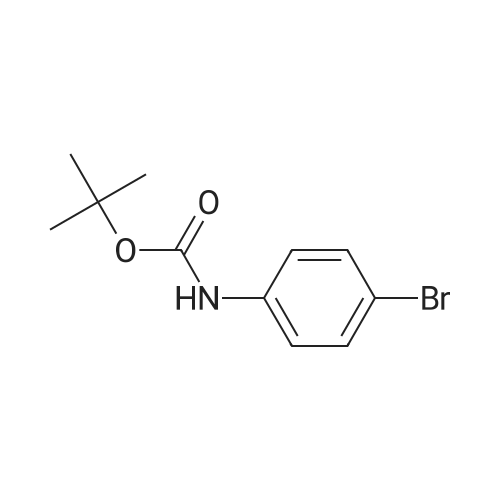

 For Research Only
For Research Only
 120K+ Compounds
120K+ Compounds
 Competitive Price
Competitive Price
 1-2 Day Shipping
1-2 Day Shipping




